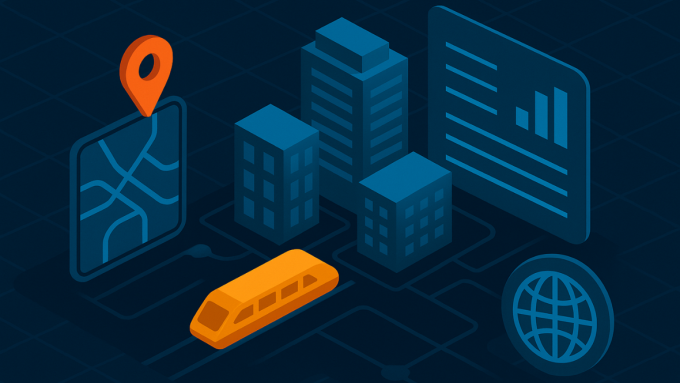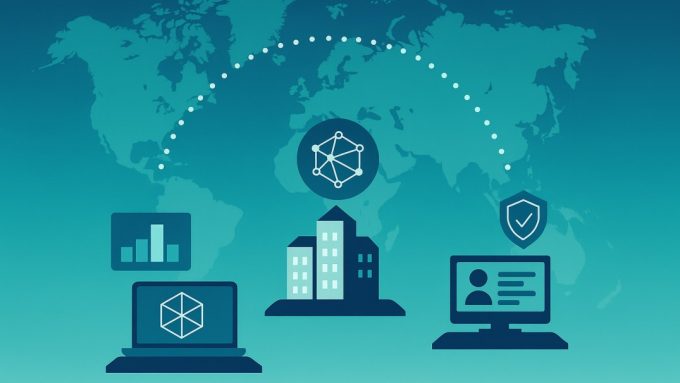We have embarked on several industrial ages and long before the arrival of the digital age there were the spinning jenny, coalmines, steam engines and telegraph poles which created the momentum for the economy we have today.
This platform of industrial progress has enabled our urbanisation, the travel between urban centres and ultimately, the digital connection between them to support a global industrialised commerce system.
The Internet of Computers
The Internet is a loose arrangement of connected but autonomous networks of devices. The devices act as hosts (or connected computers) for a specific purpose (a website host for example) and communicate through a protocol that ties together the interconnected set of networks and devices.
It is not only the backdrop of our new industrial age that makes the Internet fascinating. It was the culture that emerged from its creation.
‘Request for Comments’ created by junior team members of the ARPANET project enabled a loose and counter-hierarchical method for building consensus and developing standards.
That counter-culture was to have a profound impact on the culture of collaborators in internet-engineering circles. These collaborators maintained a meritocracy which was open and inclusive. Hacker culture was born from this and ultimately, the first internet protocol, the Network Control Protocol.
The founders of this interconnected network said:
Quote
“…we hope to promote the exchange and discussion of considerably less than authoritative ideas…”
“We reject kings, presidents and voting. We believe in rough consensus and running code.”
Open source and hacking were founding behaviours within the culture of early internet engineers.
But the Internet was only the first step in our journey to today’s digital economy.
You have to keep in mind that computing in the 1960s was exclusive to national governments, the military and businesses. However, the proliferation of the telephone provided a vision of the future for connected computing.
In the 1970s, to meet the demand for connecting multiple computers together, Local Area Networks (LANs) were created. The demand for connectivity did not stop there, the Transmission Control Protocol and Internet Protocol (TCP/IP), opened LANs to connect to other LANs.
In 1981 there were only 200 interconnected computers. Despite the vision of an interconnected community of people linked through purpose and interests, instead of proximity, practically it was still a long way away.
Internet of Business
What about the dot-com-silicon-valley fairytale of rags to riches?
CERN, the European Organisation for Nuclear Research, an owner of the world’s largest particle physics laboratory, had a wicked problem to solve:
How can CERN map the complex relationships between the various people, programs and systems?
The answer was Enquire, a programme that Tim Berners-Lee created to attempt to achieve that outcome at a local level. This effort eventually led to the creation of a World Wide Web of information. It was no longer about merely connecting computers to the Internet, and it became our foundation for publishing the information on those computers to the world.
Despite the creation of hypertext mark-up language (HTML) and facilitating connections through uniform resource locations (URL) (the addresses we use to visit data on the web), there was little interest in the WWW. The initiative was twice shelved and worked on without any formal approval. Eventually, through creating a browser for this WWW, its benefits were realised.
The first ‘thing’ connected was a toaster in 1990.
In 1995 the state ownership of the Internet ended (where the fair use policy restricted commercialisation), unleashing the commercial opportunity of the Internet.
From connecting millions of computers to selling millions of products on eBay, the web rapidly went from a data sharing and discovery tool to a fully functioning marketplace.
Investors marvelled at the most extensive initial public offering in history (1995) when Netscape (an internet browser), at just two years old, went public. Burners-Lee was vindicated as he was begging uninterested students to develop web software only a few years previous.
By July 1997, there were 19.6 million connected computers, and Amazon had over 1 million customers.
No brief history of the web would be complete without a mention of Google. A play on the word Googol, which denotes a massive number, Page and Brin set out to make the WWW discoverable. Yahoo! Offered to buy Google for $3bn, Google rejected the offer and eventually generated a need for the Oxford English Dictionary to add the verb Google.
Quote
I turn to my Google Home device:
“…okay Google, can you google the history of the internet?”
The end of the ’90s saw the first dot-com bubble burst, and the NASDAQ peaked at 500% higher than what it had been when Netscape offered it’s IPO 5 years earlier. The market contraction was significant, Alan Greenspan coined the phrase irrational exuberance, and it captured the economic problem well.
The Internet of Media
While the latter stages for the commercial aspect of the Internet failed, hacking and the open-source movement were still active. Wikipedia demonstrated the power of open and collaborative systems. It had 20,000 articles in 2002 and grew to 2.5 million by 2009, today it contains 28 billion words in 52 million articles in 309 languages.
Web 2.0 was to take the plastic nature of digital information and extend the Internet into a platform for connecting people with rich media. The printing press, compact disk, and the physical bank statements rom your bank were unable to match the plasticity of the Internet.
A simple example is Craigslist, a user-driven website that allows its users to buy and sell anything. It was started by Craig Newmark who circulated e-mail newsletters among friends with notices of events in San Francisco. By utilising the Internet, it became a website with 20 billion page views a month!
It did not stop there, in 1996 the song ‘Until it sleeps’ by Metallica became the first track to be illegally copied from CD and made available on the Internet as an MP3. It pathed a way for a generation to thinking music and other digitally related creative output should be digital, easy to access and nearly free.
64% of teenagers in 2007 had created content to upload to the Internet.
Solving the problem of compression to enable media to be streamed over the Internet redefined the entertainment industry and shaped today’s internet culture, which is now considered pop culture.
The Internet of Things
There are 20 billion devices connected to the Internet today. In 2013 Hal Varian, Google’s Chief Economist, wrote:
Quote
A billion hours ago, modern homo sapiens emerged.
A billion minutes ago, Christianity began.
A billion seconds ago, the IBM PC was released
A billion Google searches ago… was this morning.
We have reached a moment where the website is almost obsolete, and our interface with the WWW is purely through streamed data through services (like Netflix and video games on Steam) or specific applications (like Facebook and TikTok on mobiles).
It is clear from the rolling history of the Internet that there is still an opportunity for its extensibility. Where the early founding students in ARPANET set the tone of the culture of openness and agility, leading to connecting computers to computers, networks to networks and toasters to other things.
That might sound like an obvious thing to say. However, I honestly believe we are still in the early stages of an internet that will converge vast networks of national infrastructure to the benefit of the citizen.
We must preserve the playful and collaborative nature found in internet culture.
Today, The Internet of the Built Environment
From connecting a toaster in 1990 to connecting our built environment, the Internet has been on a rapid journey, and that journey does not stop here.
What next for the Internet? More than data and databases, more than information management, it will help us understand our built and natural environments in new and profound ways.
The vision of the Internet enabling an interconnected community of people linked through purpose and interests, instead of proximity is a reality today. The Flourishing Systems paper has developed today’s vision of the Internet.
That flourishing converging network of infrastructure systems is enabled by the National Digital Twin programme, and it draws some interesting parallels from the creation of the modern Internet.
The Commons is a place where we create the protocols needed to connect economic and social infrastructure digitally. A fundamental founding principle of the commons is setting the behaviour of collaborators. We aim to capture the essence of opensource and collaborate openly with the members of the DT Hub.
With that cultural underpinning, the Commons is also like a zipper, where we have a foundation that makes the initial connection and the slider (the commons) moves to connect the following elements together.
The foundation data model and the reference data libraries are like the TCP/IP and HTML frameworks. They form the protocols for connecting digital twins together and enables the built environment to communicate digitally.
This extension of the Internet is a platform for creativity and profound economic growth. Much like the Internet, the founders did not predict its impact on creative industries and pollical power through empowering communities.
We will not know the future impact of this technology, but it will be impactful.
Lastly, it is our only chance to adapt our built environment to operate in harmony with our natural environment.
The National Digital Twin Programme is standing at the beginning of a new wave of interconnectedness, and with open and inclusive collaboration, we will take the first step into a new future.



Leave a comment